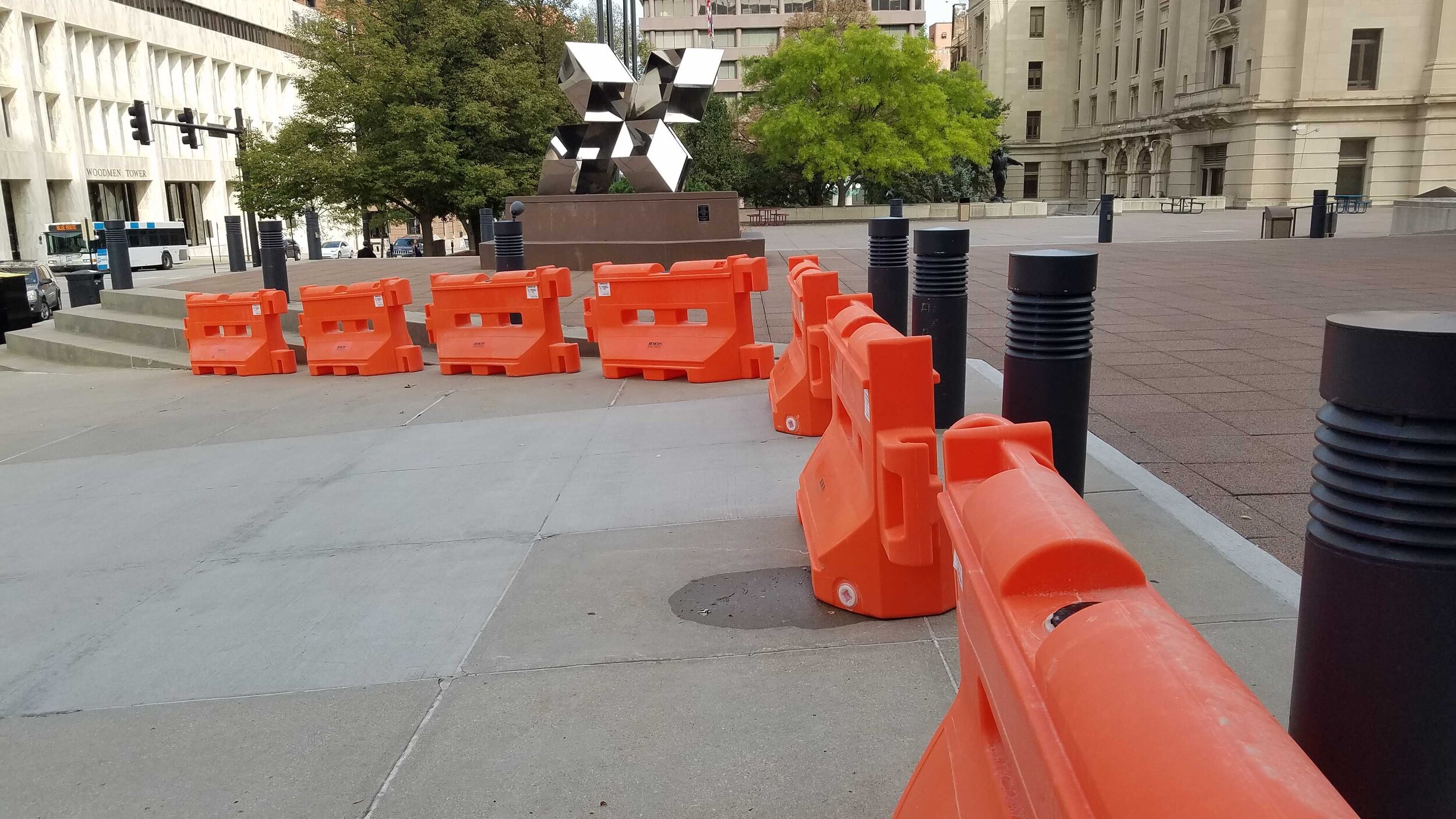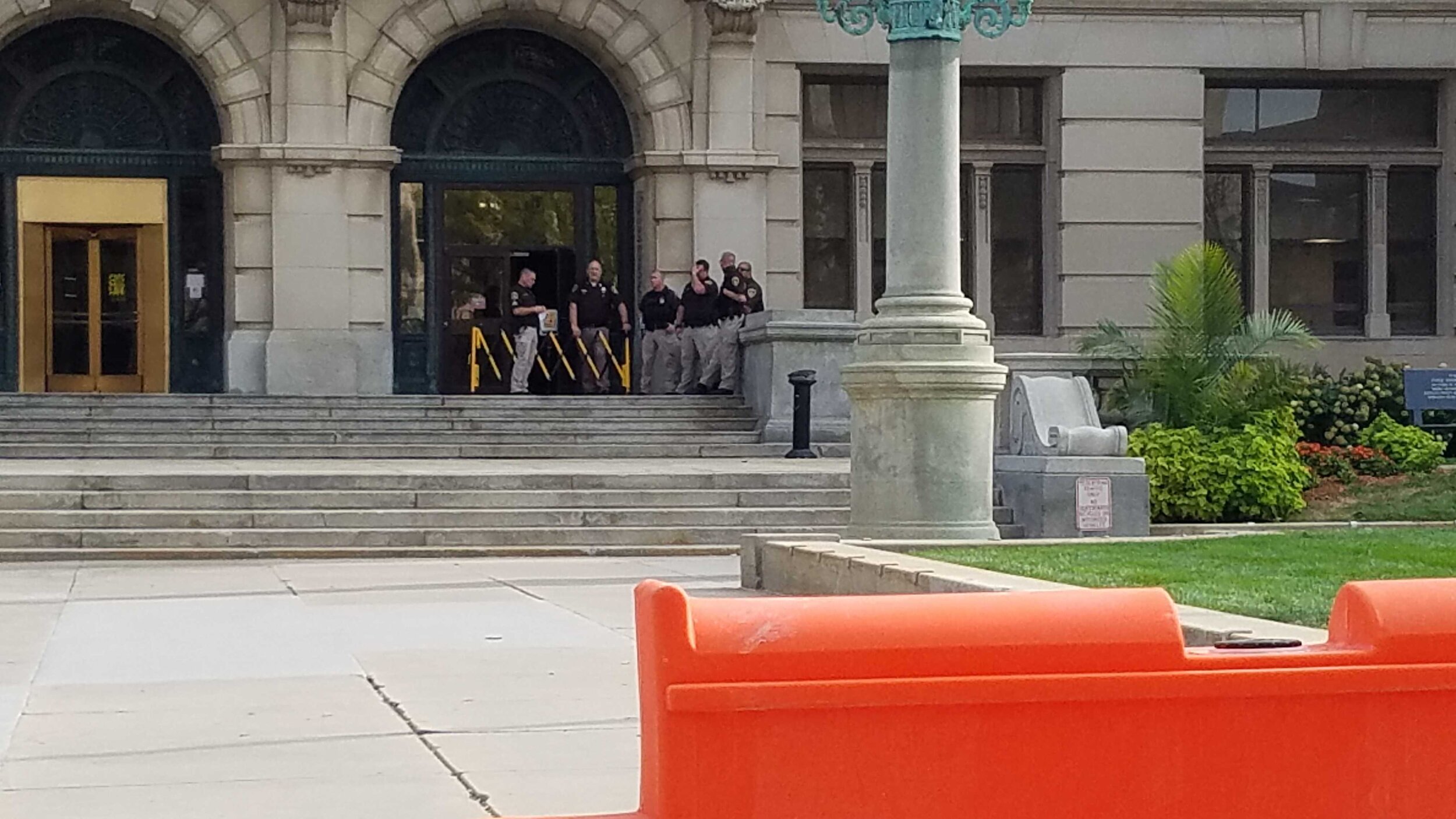Barricades Surround Douglas Courthouse as Anticipation Builds for Scurlock Grand Jury Verdict
The Douglas County Courthouse on Sep 14, 2020. Image courtesy of Luis Jimenez
BY ANUSKA DHAR
Last week, a grand jury was convened regarding the case of James Scurlock, a 22-year-old Black man who died after being shot by the white bar owner, Jake Gardner. Over the weekend, barricades were placed in front of and around the Douglas County District Courthouse and Civic Center, while anticipation builds for a decision by the grand jury. No official notice has been given on when the announcement will be made, however, multiple area residents have received emails that it will take place soon.
These government buildings are on property owned by the Omaha-Douglas Building Commission, which also manages the Civic Center and city offices where most of the barricades were placed. Recently, construction began for a courthouse annex and juvenile detention center. When asked by NOISE reporters, some officers on site said that the barricades were for “safety” and “construction”, while security guards at the courthouse said they were in “preparation,” with no further specification. Both the Douglas County sheriff deputies and Omaha Police officers denied any responsibility for the bright orange barricades placed throughout the sites.
The significance of barricades going up can be traced back to similar cases of brutality in the past. On April 29, 1992, four police officers were acquitted of the charge of using excessive force on Rodney King, a beating which “resulted in skull fractures, broken bones and teeth, and permanent brain damage” (NPR) for King. Just three hours after the announcement, unrest began, leading to five days of continuous rioting, now known as the “Los Angeles Riots.”
Here in North Omaha, a 14-year-old Black girl, Vivian Strong, was shot and killed by white police officer James Loder. Unrest followed as a verdict of acquittal was reached on March 17, 1970. These controversial cases reveal a pattern of public dissent accompanying grand jury or trial decisions that release the defendants of charges.
Furthermore, grand juries at the state or local level rarely indict police officers because of governing law. Established by Supreme Court rulings in the 1980s, it allows police to use deadly force if they believe they are in imminent danger. (Washington Post)
While again, there is no official news of when a verdict will happen, the barricades placed in front of the courthouse reflect a history of preparing for the public to react violently to an unpopular decision.
Sources:
Vivian Strong Trial
Article about the trial before the verdict: March 15, 1970 Article made available by Our Generous Donors/Omaha-World Herald
Article during the trial: March 18, 1970 Article made available by Our Generous Donors/Omaha-World Herald
Rodney King trial:
History.com Article: Rodney King trial verdict announced - HISTORY
NPR Article: When LA Erupted In Anger: A Look Back At The Rodney King Riots
LA Riots: Los Angeles Riots - HISTORY
Washington Post Article on Laquan McDonald: Opinion | The lessons we have to learn from the Laquan McDonald verdict
Washington Post Article on Using Deadly Force: Current law gives police wide latitude to use deadly force
Washington Post Article on Grandy Jury Stats: The single chart that shows that federal grand juries indict 99.99 percent of the time
DOJ Grand Jury Indictments NE: Grand Jury - January 2020 | USAO-NE





